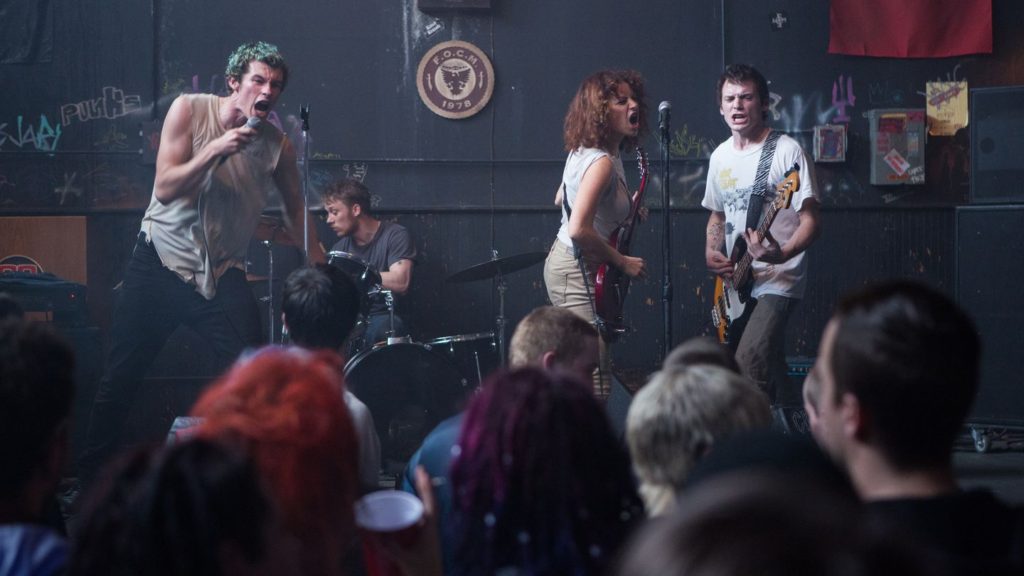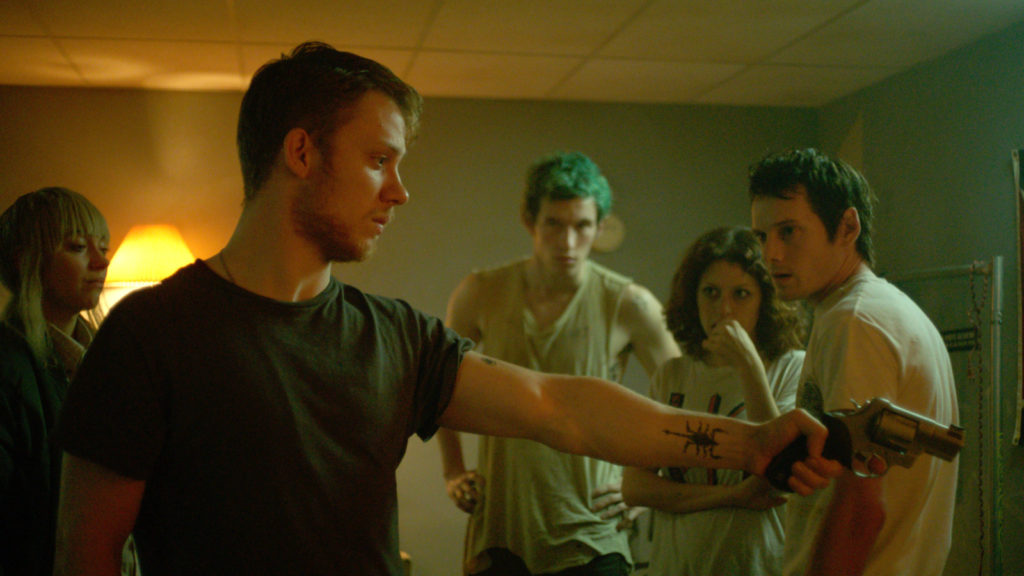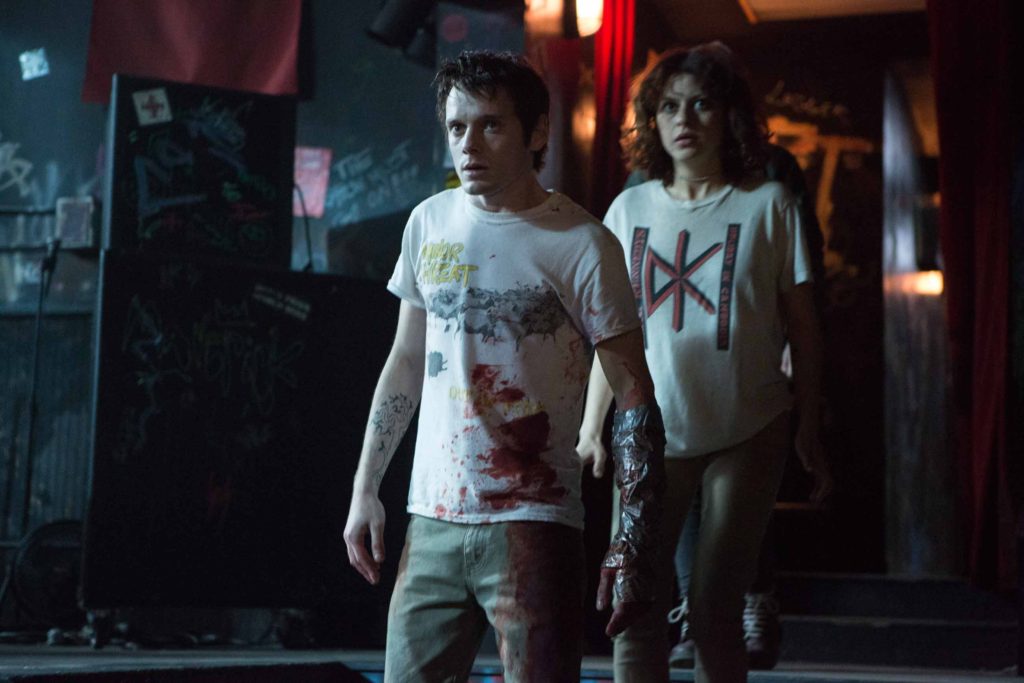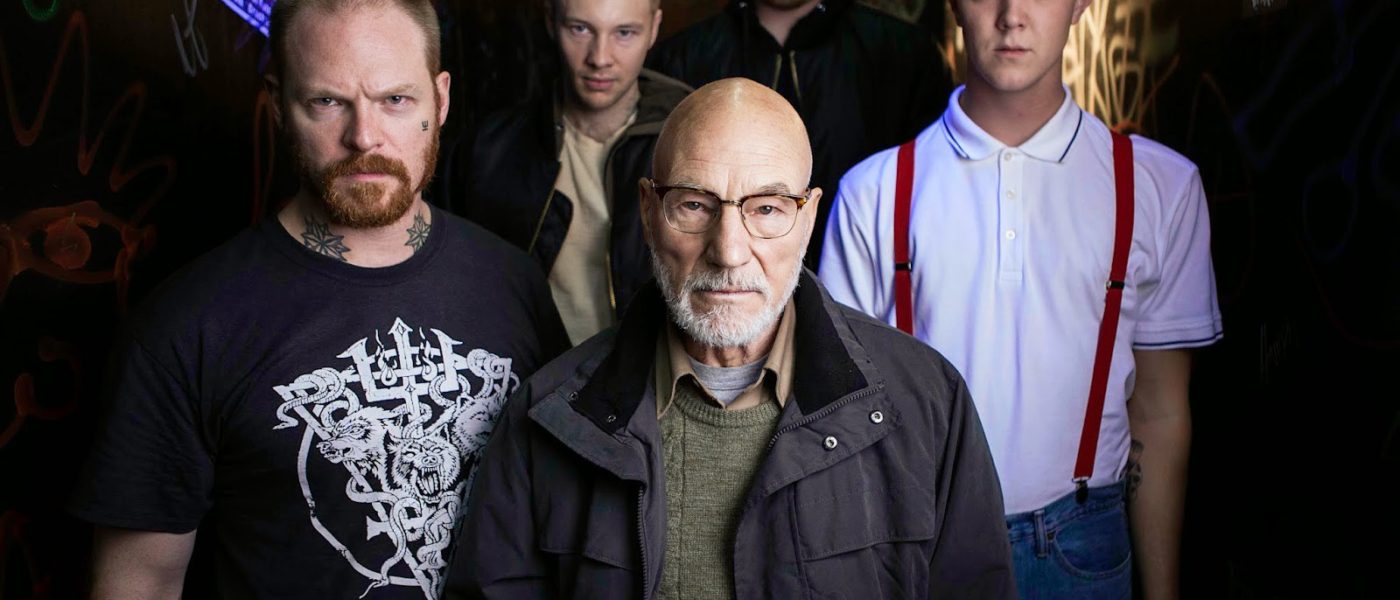Director of Brutal Siege Thriller “Green Room” Talks Depicting Realistic Violence, Sam Peckinpah & Cuddling With His Mom
Standing as a follow up to 2013’s deconstructionist revenge thriller Blue Ruin, Jeremy Saulnier’s second feature

Director Jeremy Saulnier
film Green Room is something of a grisly, blood-spilling survivalism outing elevated to a sophisticated high-art masterpiece.“The inspiration was just trying to infuse punk-rock with hardcore-genre cinema.” Saulnier tells me. The upcoming indie director reached critical acclaim with his widely renowned Cannes Film Festival debut and will likely attain an even higher amount of acclamation with Green Room, validating himself as one of the most exciting new up-and-coming American directors today. Green Room brings new meaning to the word intense and I’m not in any way reluctant to proclaim my fervent love for it.
Desperate and down on their luck, punk band “The Ain’t Rights” are offered a gig in the Oregon backwoods at a dingy venue that serves as a dwelling hotspot for some pretty brutish white supremacist and neo-nazi skinheads. After initially showing doubt to booking their show there, the foursome, led by guitarist Pat (Anton Yelchin), are persuaded by the promise of enough pay to get them home to northern Virginia. After opening their set with a cover of Dead Kennedys’ “Nazi Punks Fuck Off”, which doesn’t exactly win them over many friends, the band see’s something backstage they weren’t meant to and are subsequently held captive until further notice. “Nazi Punks was the key song that was written into the script.” Saulnier explained. “When Dead Kennedy’s gave us permission during pre-production, it was huge. I don’t know what I’d do without that song. The whole script would implode, as far as I’m concerned.”
 Saulnier has been recognized for his depiction of violence, which is known for being unglamorously realistic. Green Room, exhibits shots of brutality that are fleeting, but extremely scarring and thankfully does not fetishize these images at all. It shows violence for what it is: traumatizing, vicious and something that is not fun. Never have firearms felt so threatening every time they make an appearance on screen. Saulnier doesn’t shy away from the grim reality of what guns, machetes, box cutters and attack dogs can really do to another human being and it’s gut-punching. One particular scarily abrupt shotgun blast to the face is the complete flip-side to what could be considered a “cool head shot” that one would see in most standard action movies. “I do think of myself as a relatively intuitive filmmaker.
Saulnier has been recognized for his depiction of violence, which is known for being unglamorously realistic. Green Room, exhibits shots of brutality that are fleeting, but extremely scarring and thankfully does not fetishize these images at all. It shows violence for what it is: traumatizing, vicious and something that is not fun. Never have firearms felt so threatening every time they make an appearance on screen. Saulnier doesn’t shy away from the grim reality of what guns, machetes, box cutters and attack dogs can really do to another human being and it’s gut-punching. One particular scarily abrupt shotgun blast to the face is the complete flip-side to what could be considered a “cool head shot” that one would see in most standard action movies. “I do think of myself as a relatively intuitive filmmaker.
“There could be some deep psychological reason as to why I show violence in a certain way, but I just find it’s what I gravitate towards. Not only in the violence, but I aim for authenticity and realism and sort of a grounded aesthetic in everything, from the sets to performances. It happens to apply to violence too.”
Saulnier continued, “When you do that with violence, you see it for what it is, which is shocking, brutal, abrupt, awkward and terrifying. It’s hard to swallow.
Moreover, the whole film carries a certain Sam Peckinpah sensibility in its grit, an observation that was on point for Saulnier who reported he was hugely inspired by Peckinpah’s highly controversial 1971 study of the pacifist-intellectual vs. the human-animal picture Straw Dogs. Saulnier explained, “Straw Dogs is one of the few movies I referenced before I even wrote Green Room. In regards to Peckinpah, it’s the grainy texture that I’ve been so attracted to and the analog vibe. It’s very filmic and present. It doesn’t try too hard and it’s not worried about demographic. It’s a real auteur making a movie.”

Saulnier also enjoys talking about his background growing up in the Washington D.C. punk scene. “I was in the punk-rock/hardcore scene for most of my childhood. Peripherally, at first of course, I was a skateboarder in suburban Virginia and then was just introduced to punk rock and thought it was the perfect soundtrack for such a physical expression. Also, skateboarding was very individual too so I liked that. I was always very athletic, but I didn’t really like organized sports.” He continued, “It wasn’t until my buddies got their driver’s license in the early 90’s that I experienced what a real show was like. That was intoxicating. It was another outlet for physical and individual expression. That’s what I was trying to capture with Green Room.”
But Saulnier is a pretty straight-laced dude these days. He’s rarely seen wearing the typical punk uniform that his characters so showily present themselves in, particularly the character Pat, who sports ripped jeans and a “Minor Threat” T-shirt, one of my personal getups I’d often be found wearing back in my own adolescent days. “The more I talk to people who are well renowned anchors of the punk scene, it’s like we all have our secret desert island bands and rarely are they ever punk bands. After the experience of a show, when my ears are ringing, I don’t want to hear any music. When I was really young, I wanted to go home and cuddle with my mom.” He laughed, “You feel like, ‘is everyone else hardcore punk around the clock?’ Because I certainly am not. We are not our projected selves. You could argue it’s as punk as anything else to admit that you’re not punk.” Saulnier concluded making the statement, “I think when you get older, the currency is not cool, its authenticity. And that’s a big theme in this movie.”
 Even if one has a strong aversion to horrifically life-like violence, Green Room is not to be missed. Saulnier is an artist who values life, and shows viewers just how unnervingly awful and tragic it is to take one away. Most circles have deemed the film a punk movie, obviously because it features a punk band and a number of nods to scene bands of the 80’s. But what makes the film punk outside that is the kind of mentality and ideologies went into making it, which is just unfiltered filmmaking that has its own agenda, defies expectations and couldn’t care less what viewers think about it.
Even if one has a strong aversion to horrifically life-like violence, Green Room is not to be missed. Saulnier is an artist who values life, and shows viewers just how unnervingly awful and tragic it is to take one away. Most circles have deemed the film a punk movie, obviously because it features a punk band and a number of nods to scene bands of the 80’s. But what makes the film punk outside that is the kind of mentality and ideologies went into making it, which is just unfiltered filmmaking that has its own agenda, defies expectations and couldn’t care less what viewers think about it.
GREEN ROOM opens April 29th in theaters nationwide and I highly recommend supporting it.


